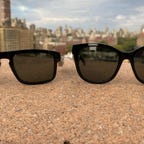
Best everyday audio sunglasses (Currently out of stock at Walmart)
3. Bose Tenor and Soprano
View details
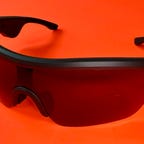
Top cheap sport audio sunglasses
4. Avantree SG188 Bluetooth Smart Audio Sunglasses
View details
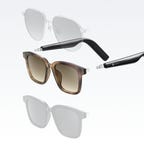
Most modular (Update: Currently unavailable)
5. Soundcore Frames Bluetooth smart glasses with interchangeable frames
View details
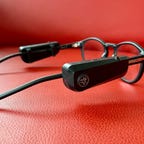
Best clip-on Bluetooth speaker accessory for glasses
8. JLab JBuds Frames
View details
If you prefer glasses to contact lenses or you regularly rock your favorite sunnies while out and about, you may also struggle to keep your headphones on for extended periods. The glasses and headphones combo can be hard on the ears and may cause some discomfort. This is why we have Bluetooth audio glasses that act as a two-in-one device. They’re essentially a form of wireless open headphones that allow you to hear the outside world while listening to audio streamed from your smartphone and other Bluetooth-enabled devices.
The category hasn’t taken off as fast as some people thought it might, but there are a growing number of audio glasses available and more on the way, with companies like Bose, a leader in the category, already on the second generation of its audio sunglasses. Amazon’s Echo Frames are also in their second generation. The prices of these devices start from $30 and can go up to $400, depending upon the manufacturer.
A host of other companies, including several no-name Chinese manufacturers, have also released audio glasses. Some are geared toward everyday use, allowing you to stealthily listen to audio on the go, while others are designed for runners and bikers who want to leave their ears open to the world for safety reasons.
The truth is that most audio eyewear doesn’t sound great. In fact, many audio glasses and sunglasses sound downright mediocre or even bad, particularly those that use bone-conduction technology instead of traditional audio drivers. Bass performance can sometimes be an issue.
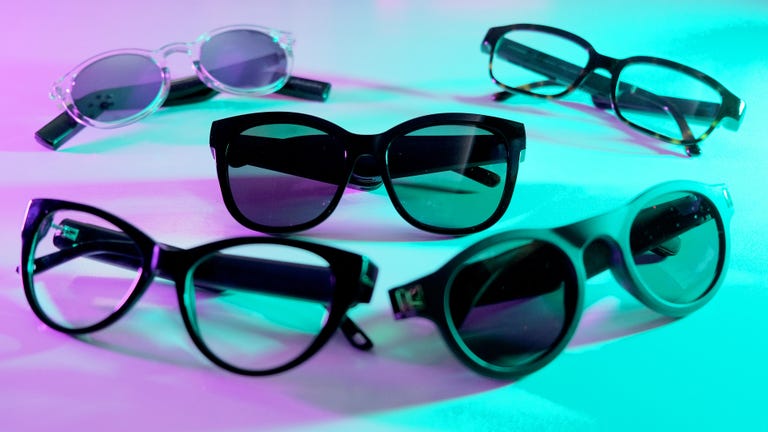
Watch this: Checking out audio glasses
That said, if you listen to more spoken-word audio — whether that’s podcasts, audiobooks or talk radio — audio glasses are fine, since they’re strongest in the midrange, where vocals live. And most of the audio glasses on this list work well for making phone calls. Some feature beam-forming microphones and bone-conduction technology.
Aside from audio quality, the other important factor is the glasses’ design. There’s a lot of variation there as well, with some models fitting better and looking more stylish than others.
Read more: Best Places to Buy Replacement Prescription Lenses Online in 2023
It should be noted that you can add prescription lenses to most audio sunglasses, and it’s easy to send your glasses to an online replacement lens site. However, that adds to the overall cost, since replacement lenses generally cost around $100 to $200, depending on the type of lens you choose.
Though I’m recommending only a few models at this point, I’ll update this list as new ones are released. More should be coming, with improvements.
If you’re looking for the best-sounding pair of audio glasses with superior overall performance — that includes call quality and battery life — the Bose Frames Tempo are the one to get. Bose’s innovative eyewear is ostensibly a sports model designed for runners and bikers, and while they’re a little bulky, they stay on your head securely. While these frames have been discontinued starting early 2024, you can still find them from a few retailers.
The Tempo offers slightly better sound and battery life than the more traditional-looking Tenor and Soprano (see below). The Tempo has better specs all-around, with USB-C charging and larger 22mm drivers. These Bluetooth sunglasses also deliver up to 8 hours of battery life, and have simple one-touch volume control so you can adjust your music on the fly. Bose sunglasses are made of the polarized lens and they are prescription, or Rx ready, meaning you can select Bose Frames with your prescription lens.
Their sound is definitely improved from the original Frames. Bose says the Tempo plays “deeper and louder — loud enough for cycling at 25 mph — while still able to hear traffic and your training partners.” According to Bose, they’re sweat-, weather-, scratch- and shatter-resistant, and they fit under most protective helmets. (I had no problem using them with a couple of bike helmets.) They also work well for making calls, thanks to a new dual-microphone system. Optional lenses are available for $39 and you can order prescription lenses through Lensabl.
Razer has made a surprise entry into the audio glasses arena and the result is surprisingly good. The Razer Anzu smart glass comes in round and square versions in two different size options. In terms of sound, they’re arguably just a tad behind the Bose Tenor and Soprano shown below (like those models, the Anzu has 16mm drivers), but they’re pretty close. While they’re a little bass-shy, they have more bass than some of the other models on this list. The lower price tag also gives them a value advantage over the Bose, and right now you can pick them up for as low as $40.
They’re also pretty light and comfortable to wear (as you can see from the photo, I tried the square version). The small version weighs 43 grams while the large weighs 48 grams. By comparison, the Echo Frames, the lightest audio glasses on this list, are 31 grams. The glasses include 35% blue light filtering lenses along with a set of polarized sunglass lenses (you can easily swap them in). This smart eyewear is touch-enabled, plus you can play or pause media, manage calls and pair easily to your PC device. The built-in Bluetooth speaker hidden on its frame provides stutter-free sound and does not skip or delay audio.
These wireless Bluetooth sunglasses are IPX4 water-resistant (meaning they’re splashproof) so you can use them for running. Audio glasses work well for running and biking, because they leave your ears open so you can hear traffic. Battery life is rated at up to 5 hours at moderate volume levels, and additional polarized lenses are available for $30.
Also worth noting: Since Razer is a “gaming lifestyle” company, it’s highlighting its low-latency Bluetooth technology. It says the “customized Bluetooth 5.1 connection brings industry-leading 60ms latency for smooth, stutter-free sound.”
The Razer Anzu companion app for iOS and Android enables firmware updates, lets you make EQ adjustments (default, enhanced clarity or treble boost), access latency settings and check battery status. You can make calls with them and access your virtual assistant with a button press.
Razer has partnered with Lensabl for prescription glasses lenses, although more online replacement lens sites, including replacerxlenses.com and overnightglasses.com, can fit them with Rx lenses. Lensabl is offering a 15% discount to Anzu owners, but you can compare its prices with other sites’ prices.
Like the Tempo, the Tenor and Soprano are part of Bose’s line of second-generation audio sunglasses. While the Tempo is more sports-oriented, these models are designed to look like regular glasses. (You can still run or bike with them but they’re not rated for water- or sweat-resistance.) They’re slicker-looking than the original Bose Alto and Rondo Frames, and they have a glossy finish. The Tenor fit my face better than the Soprano, which — as the name implies — Bose is aiming at women who like oversized sunglasses. Anecdotally, my daughter likes them.
Bose improved the sound in the Tenor and Soprano, and the battery life is better. It’s up to 5.5 hours instead of around 3.5 hours, charging with a pogo-pin cable rather than USB-C. Both pairs of sunglasses play a little louder than the original Frames, and the bass response is better, so music sounds fuller and richer. Don’t expect the big bass you get from a standard set of headphones, though, and they can distort at higher volumes. Still, the sound is significantly better than what you get from even the best bone-conduction headphones like those from AfterShokz, which developed a pair of audio sunglasses but never shipped them out.
Like the Tempo, Bose has also upgraded the voice-calling capabilities in these models, adding dual beam-forming microphones. These smart sunglasses allow you to take calls on the go, hands-free. Bose offers optional lenses for $39. Since these sunglasses have a more traditional design, more online replacement lens sites — including replacerxlenses.com, Lensabl and overnightglasses.com — can fit them with Rx lenses.
While the Avantree SG188 Bluetooth Smart Audio Sunglasses have a bit of generic quality to them and don’t have the greatest lenses (they are dark and polarized, however), they fit me well, look pretty good and deliver decent enough sound for their modest price. Also, Android uses should note that they have support for the AptX audio codec for what that’s worth (it’s not like these audio glasses are for critical listening).
Designed for sporting activities, they’re IPX5 splashproof and rated for 5 hours of battery life at moderate volume levels. They also work decently for making voice calls, though wind noise is still a factor. Keep your expectations low and you may be pleasantly surprised.
These also are available as a bundle with a clear lens for $10 more. A carrying pouch and two different size nose pieces are included.
The Soundcore by Anker Frames Bluetooth audio glasses are a little different from the competition in that their arms detach and you can swap in different frame styles (several styles are available). You initially purchase a base model with the style of frame you like or, for a little more money, you can opt for a bundle that includes two frames. The lenses seem pretty decent — they’re polarized — and online replacement lens sites such as replacerxlenses.com, Lensabl and overnightglasses.com can fit Echo Frames with Rx lenses.
Sound quality is above average for audio glasses but not up to the level of the Bose Frames’ sound quality (the Soundcore Frames are a little bass-shy like a lot of Bluetooth audio glasses). But I liked the fit and they’re also decent for voice calling with dual microphones and four speakers (two speakers in each arm). You can use voice commands or the integrated touch controls to control music playback, as well as answer and end calls.
They’re IPX4 water-resistant (splashproof) and deliver up to 5.5 hours of battery life on a single charge at moderate volume levels. They use a proprietary magnetic charger. It’s also worth noting that they have a companion app for iOS and Android that allows you to receive firmware updates.
Revo has a line of sunglasses called Revo Black. The Revo Sonic 1 is part of that line but adds an audio element courtesy of Solos, a maker of smart-audio glasses. So, as far as I can tell, these are essentially a Solos/Revo hybrid.
The long a short of it is they’re really good sunglasses with middle of the road sound (for audio glasses). So great optics — and an attractive design and comfortable fit — but audio quality is on the average side with so-so bass performance. On he plus side, battery life is very strong at up to 11 hours, and the glasses have some health-tracking features and come with a really nice case (they have a magnetic charger). You can also make calls with them.
While they’re expensive, the Sonic 1, which are available in three color options, sold out on Revo’s site (you can find them at a few few other online retailers) due to “overwhelming demand.” Revo says the expected in-stock date for its site is early 2023.
Needless to say, Amazon’s Echo Frames have Amazon’s Alexa voice assistant built into them so you can ask what the weather is, get news and sports scores, skip your music tracks and control your Alexa smart home products without touching your glasses. I like their design — they’re lightweight and fit my face comfortably and securely (they fit me better than all the Bose audio glasses). They also work well for making calls, with decent noise reduction outdoors.
Really, the only strike against them is that they sound pretty middle-of-the-road for audio glasses. They lack in the bass department and fall short of the Bose Frames in terms of sound. That said, they’re currently a decent option for audio glasses and if you try them and don’t like them, they’re easy to return to Amazon.
It’s worth noting that the base model ($300 list) comes with clear lenses. However, for a little more, you can opt for tinted lenses (sunglasses) or blue-light filtering lenses, They do come in several different color options (the Horizon Blue version is pictured) and battery life is rated at a modest 4 hours for music playback. Like the Bose Frames (except for the Tempo), they charge with a proprietary pogo-pin cable. A nice carrying case is included.
Online replacement lens sites such as replacerxlenses.com, Lensabl and overnightglasses.com can fit Echo Frames with Rx lenses.
Maybe you’ve had your eye on Bose’s second-gen Frames audio sunglasses (see above), but you looked at their high price tag and said no thanks. Well, JLab Audio has a much cheaper Bluetooth audio alternative: The JBuds Frames are essentially open-ear true-wireless earbuds that clip onto your existing glasses.
It’s an intriguing innovative eyewear concept that JLab describes as a bring-your-own-frame design, although it’s clearly a bit clunky looking and a bit disingenuous to call these earbuds “frames.” That said, I received a review sample and can tell you that these sound almost as good as the Bose Frames and are also decent enough for making calls. In fact, I’d say they’re the second-best-sounding “audio frames” on this list.
JLab says its JBuds Frames comprise “two independently operating Bluetooth true wireless audio devices, which can be affixed to the temples of sunglasses, eyeglasses, and similarly styled blue light blocking eyewear.” They have 16mm drivers, and JLab says your music can’t be “heard by those close by,” though from my tests that only applies when you’re listening to audio at more moderate volume levels.
Battery life is rated at 8 hours, and the clip-on devices have an IPX4 water-resistance rating, making them splash-resistant. They charge with a proprietary pogo-pin cable.
Read more: Best Place to Buy Contacts Online in 2023











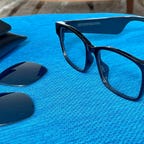
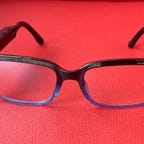










+ There are no comments
Add yours